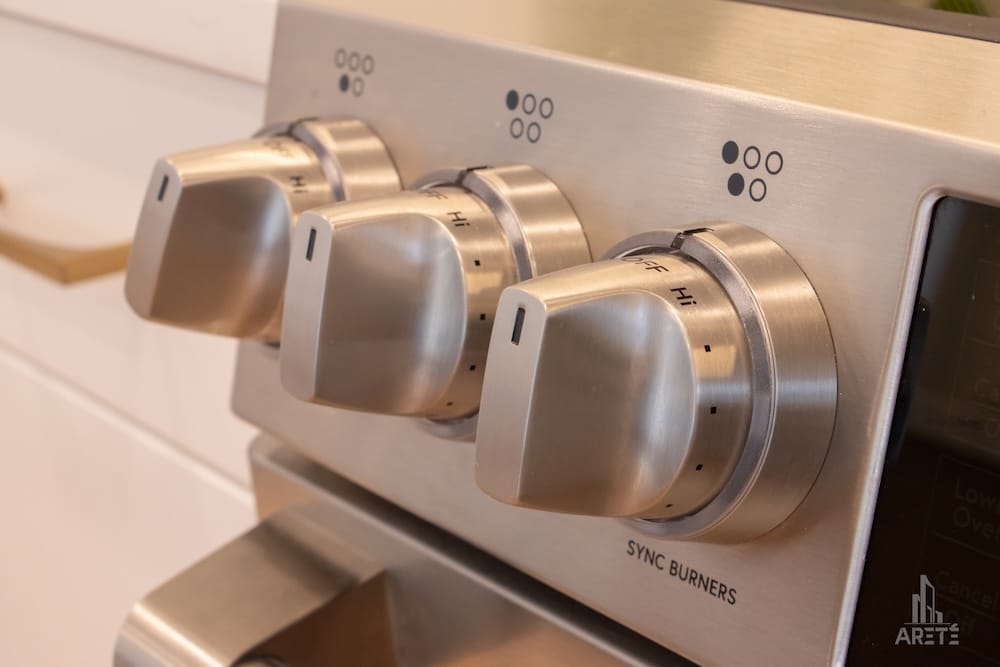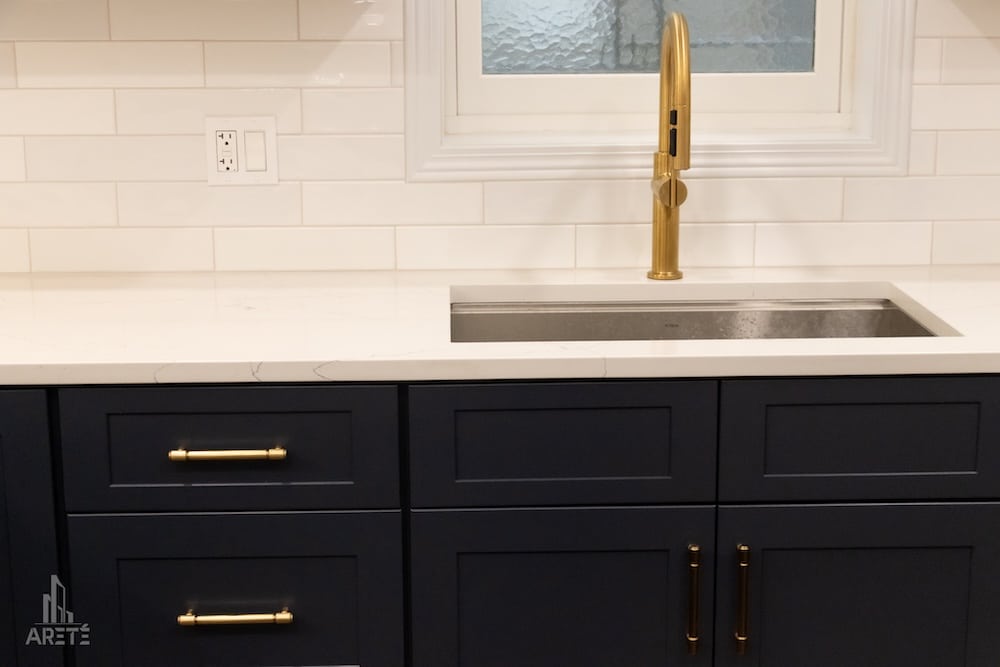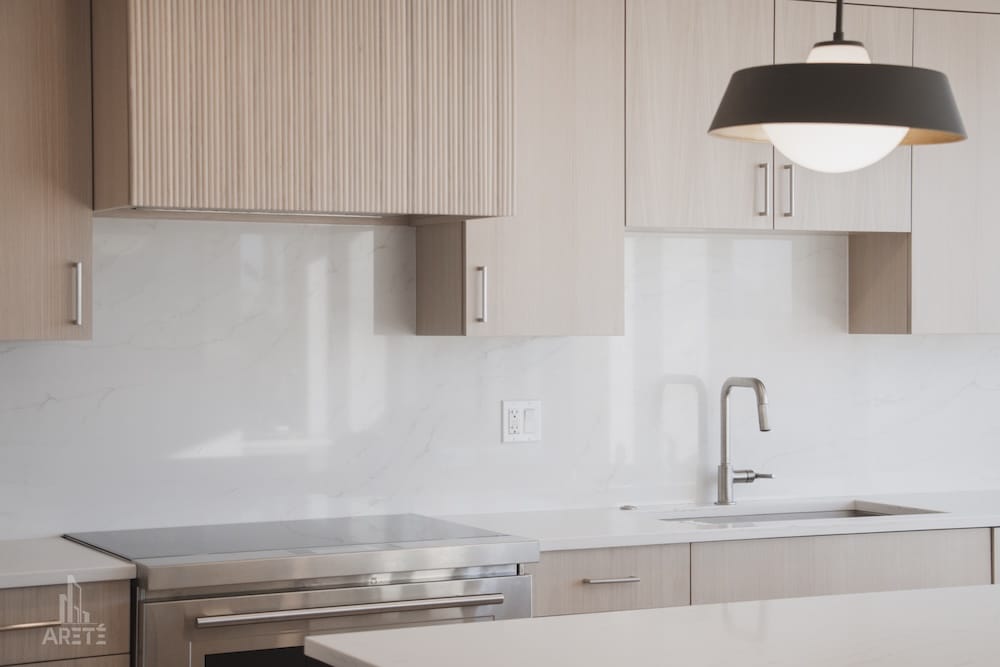The Art of Mixing Metals in Your Chicago Kitchen Design
Gone are the days when every metal finish in your kitchen had to match perfectly. The modern approach to kitchen design embraces the beauty of mixed metals, creating spaces that feel sophisticated, layered, and uniquely yours. This design trend has gained popularity because it allows homeowners to break free from the constraints of single-metal schemes while adding visual interest and depth to their culinary spaces.
Mixing metals in kitchen design isn’t about randomly throwing together different finishes and hoping they work. It’s a thoughtful art that requires understanding undertones, establishing hierarchy, and creating balance. When done correctly, mixed metals can transform your kitchen from ordinary to extraordinary, giving it a custom, collected-over-time feel that speaks to your personal style.
The secret to success lies in approaching metal mixing with intention and knowledge. Our Chicago kitchen designers understand the fundamentals of metal coordination. We’re here to help you create a kitchen that feels both cohesive and dynamic.
Understanding Metal Undertones
Before diving into specific combinations, you need to understand that metals have personalities expressed through their undertones. Just like paint colors, metals can be categorized as warm or cool, and recognizing these characteristics forms the foundation of successful metal mixing.
Warm metals include brass, bronze, copper, gold, and oil-rubbed bronze. These finishes carry yellow, orange, or red undertones that create a cozy, inviting atmosphere. They work beautifully in traditional, farmhouse, and transitional kitchen styles, bringing warmth and richness to the space.
Cool metals encompass chrome, stainless steel, nickel, and pewter. These finishes have blue or gray undertones that feel clean, crisp, and contemporary. They’re perfect for modern, industrial, and minimalist kitchen designs, creating a sleek and professional appearance.
Knowing the differences in these these undertones helps you make informed decisions about which metals will harmonize naturally and which combinations might create unwanted tension in your design.
Choosing a Dominant Metal
Every successful mixed-metal kitchen starts with selecting a dominant metal that will anchor your design. This primary finish should appear in the largest or most prominent elements of your kitchen, typically accounting for about 70% of your metal finishes.
Consider your existing fixtures when choosing your dominant metal. If you have stainless steel appliances, stainless steel or brushed nickel might serve as your primary finish. For kitchens with warm wood tones or earth-colored countertops, brass or bronze could be your dominant choice.
Your dominant metal should also complement your overall design style. Contemporary kitchens often benefit from cool metals like chrome or stainless steel as the primary finish, while traditional spaces may call for warmer options like brass or oil-rubbed bronze.
Once you’ve established your dominant metal, you can introduce one or two accent metals to create visual interest without overwhelming the space.
Complementary Metal Pairings
Certain metal combinations naturally complement each other, creating harmonious relationships that feel intentional rather than accidental. These tried-and-true pairings can serve as your starting point for mixed-metal success.
Brass and matte black create a striking combination that’s both classic and contemporary. The warmth of brass softens the boldness of black, while the black provides dramatic contrast and modern edge. This pairing works exceptionally well in transitional and industrial-style kitchens.
Chrome and stainless steel form a seamless cool-toned partnership. Since both metals share similar undertones, they blend effortlessly while providing subtle variation in texture and sheen. This combination is perfect for contemporary and modern kitchen designs.
Brushed gold and oil-rubbed bronze offer a rich, layered warm-metal combination. The slight variation in tone and texture creates depth while maintaining a cohesive warm palette that works beautifully in traditional and farmhouse-style kitchens.
For those feeling more adventurous, mixing warm and cool metals can create stunning results when done thoughtfully. Brass hardware with stainless steel appliances, for instance, can add unexpected warmth to a cool-toned kitchen.
Strategic Placement Tips
Where you place different metals throughout your kitchen significantly impacts the overall success of your mixed-metal scheme. Strategic placement ensures that each metal finish feels purposeful and contributes to the design’s overall balance.
Cabinet hardware offers the perfect opportunity to introduce your secondary metal. If stainless steel appliances serve as your dominant metal, consider brass or black hardware for visual contrast and warmth. Alternatively, if brass is your primary finish, sleek chrome or stainless steel hardware can provide contemporary balance.
Light fixtures present another excellent opportunity for metal mixing. Pendant lights over an island or chandelier over a dining area can showcase your accent metal while creating a focal point. Consider how the lighting metal interacts with nearby elements like cabinet hardware and faucets.
Faucets and plumbing fixtures should coordinate with either your dominant or secondary metal choice. A brass faucet can beautifully complement brass cabinet hardware while creating a cohesive warm-metal story throughout the space.
Don’t overlook smaller details like switch plates, outlet covers, and decorative accessories. These elements might seem minor, but they contribute to the overall metal story and help tie your scheme together.
Maintaining Visual Balance
Creating balance in a mixed-metal kitchen requires careful attention to distribution and repetition. Each metal should appear at least twice throughout the space to feel intentional rather than accidental.
The rule of threes works well for metal mixing. Limit yourself to three different metal finishes maximum to avoid creating visual chaos. This constraint forces you to be selective and intentional about your choices.
Consider the visual weight of different metals when distributing them throughout your kitchen. Darker metals like oil-rubbed bronze or matte black carry more visual weight than lighter finishes like polished chrome or brushed nickel. Balance heavier metals with lighter ones to prevent any single area from feeling too heavy or light.
Texture plays a crucial role in successful metal mixing. Combining different textures—such as brushed, polished, and matte finishes—adds depth and interest while helping different metals coexist harmoniously.
Common Mistakes to Avoid
Even with the best intentions, certain mistakes can derail your mixed-metal efforts. Being aware of these common pitfalls helps you navigate the process more successfully.
Avoid using too many different metals in one space. More than three metal finishes typically creates visual confusion rather than sophisticated layering. Stick to a curated selection that feels intentional and cohesive.
Don’t neglect to consider your appliances when planning your metal scheme. Large appliances represent significant metal real estate in your kitchen, and ignoring their finish when selecting other metals can create discord.
Be cautious about mixing metals that are too similar but not identical. Two slightly different shades of brass or chrome can look like a mistake rather than an intentional choice. Either choose clearly different metals or stick to identical finishes.
Avoid placing conflicting metals too close together without a buffer. If you’re mixing warm and cool metals, consider using neutral elements like wood or stone to create visual separation and prevent jarring contrasts.
Areté: Transforming Your Chicago Kitchen with Confidence
Mixing metals in kitchen design allows you to create a space that feels sophisticated, personalized, and professionally designed. By understanding undertones, establishing hierarchy, and maintaining balance, you can successfully combine different metal finishes to achieve a look that’s both cohesive and visually interesting.
Start with selecting your dominant metal based on existing elements and design style preferences. Then introduce one or two complementary metals strategically throughout the space, ensuring each appears multiple times for visual continuity.
Ready to transform your kitchen with expertly mixed metals?
Areté’s design professionals can help you navigate metal selections and create a cohesive scheme that reflects your personal style. Call us 773.683.3033 or contact us today to schedule a consultation and discover how thoughtful metal mixing can elevate your kitchen design.


